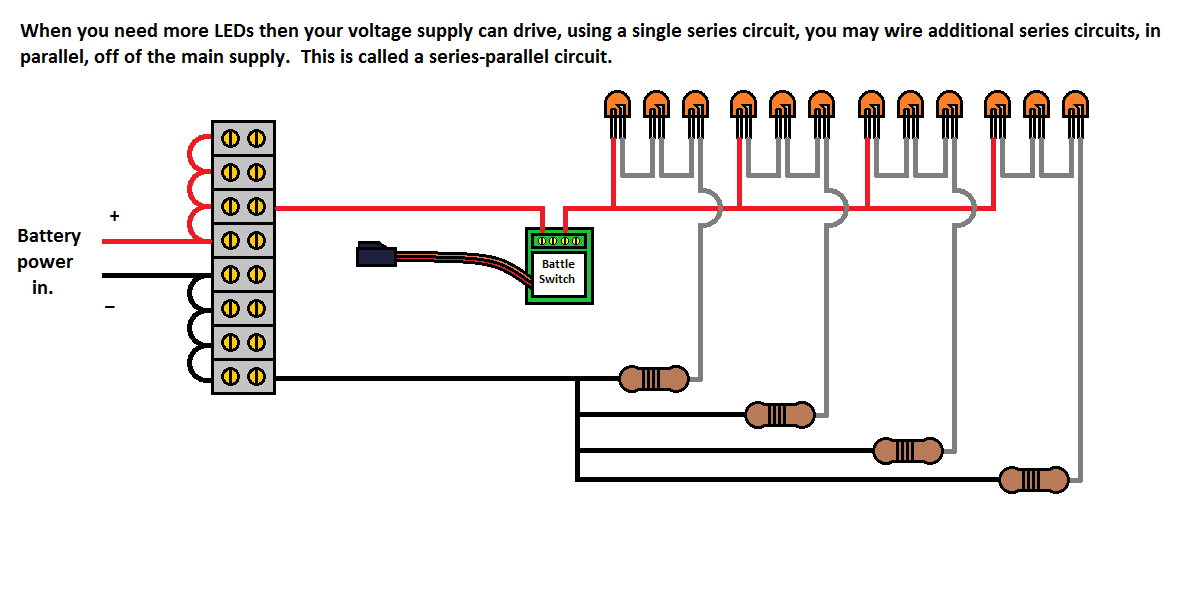One thing you are bound to come across when designing and wiring up multiple LEDs is this. Your supply voltage will only be able to power so many LEDs in series. If you have a 7.2 volt battery pack, and your LEDs require 3 volts to light up, the max you can run in series is two LEDs. If you have 12 volts to work with, then you will be able to 3 LEDs in series.
What do we do when we want to run more then that?

Enter the series-parallel circuit. Basically we are unlimited to the number of parallel circuits we can run off of our battery, even if we can only drive 2 or 3 LEDs wired in series. So what you do is make multiple series circuits and parallel them off the power supply (battery). Each set of LEDs wired in parallel all receive the full battery voltage. Within each additional parallel LED circuit we have, the voltage divides across the LEDs wired in series. By wiring in series-parallel, there is no limit to the number of LEDs we can run.
If you want an odd number of LEDs, you can just as easily run a group of 2 or 3 in series, and in a parallel circuit off your supply voltage, run 1, or 2 in series. The resistance of your resistor will need to change because of the fewer LEDs in that circuit, but it's all accounted for, in the LED array calculator I provided a link to above.